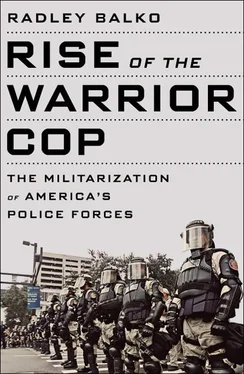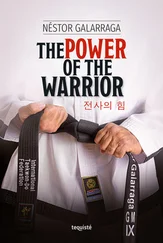22. James J. Kilpatrick, “Judicial Activists Gain Full Control” (syndicated), Evening Independent, June 9, 1967.
23. Editorials summarized in “Opinion in the United States,” New York Times, June 19, 1966.
24. Terry v. Ohio, 392 US 1 (1968).
25. Norm Stamper, Breaking Rank: A Top Cop’s Exposé of the Dark Side of American Policing (New York: Nation Books, 2005), p. 66.
26. See Barry Friedman and Dahlia Lithwick, “Watch as We Make This Law Disappear: How the Roberts Court Disguises Its Conservatism,” Slate, October 4, 2010; Susan A. Bandes, “The Roberts Court and the Future of the Exclusionary Rule,” American Constitution Society for Law and Policy issue brief, April 1, 2009; Adam Liptak, “Justices Step Closer to Repeal of Evidence Ruling,” New York Times, January 30, 2009; David A. Moran, “The End of the Exclusionary Rule, Among Other Things: The Roberts Court Takes on the Fourth Amendment,” Cato Supreme Court Review (2006): 283–309.
27. The Texas clock tower shooting narrative is from Pamela Colloff, “96 Minutes,” Texas Monthly (August 2006); Gary M. Lavergne, A Sniper in the Tower: The Charles Whitman Murders (Denton: University of North Texas Press, 1997); and William J. Helmer, “The Madman in the Tower,” Texas Monthly (August 1986).
28. Ricardo Gandara, “Casting Off Shadow of UT Tower Shooting,” Austin American-Statesman, May 13, 2011.
29. David Eagleman, “The Brain on Trial,” The Atlantic (July-August 2011).
30. Robert L. Snow, SWAT Teams: Explosive Face-offs with America’s Deadliest Criminals (New York: Plenum Press, 1996), p. 7.
31. Sid Heal, “Minimum Performance Standards,” The Tactical Edge (Winter 1991): 19–21, quoted in Snow, SWAT Teams, p. 7.
32. Rick Tejada-Flores, “The United Farmworkers Union,” for The Fight in the Field: Cesar Chavez and the Farmworkers’ Struggle, PBS, 1997, available at: http://www.pbs.org/itvs/fightfields/cesarchavez1.html(accessed September 12, 2012).
33. “Community Response Unit,” City of Delano, California website, available at: http://www.cityofdelano.org/index.aspx?NID=140(accessed September 15, 2012); and Charles Bennett, “The Birth of SWAT,” February 25, 2010, available at: http://www.officer.com/article/10232858/the-birth-of-swat(accessed September 29, 2012).
34. Gates, Chief, pp. 124–125.
35. Ibid., pp. 125–126.
36. Michael Newton, “Thomas Reddin,” in The Encyclopedia of American Law Enforcement (New York: Infobase Publishing, 2007), p. 288.
37. Gates, Chief, p. 129.
38. LAPD, “Metropolitan Division,” available at: http://www.lapdonline.org/metropolitan_division(accessed September 30, 2012).
39. Newton, “Thomas Reddin.”
40. Gates, Chief, p. 129.
41. Ibid., p. 130.
42. Ibid., p. 131.
43. Ibid.
44. Ibid., pp. 131–132.
45. Ibid., p. 133.
46. “Police Stockpiling Weapons for Riots,” Associated Press, March 2, 1968.
47. George Gallup, “Civil Rights Holds Top Concern in US” (syndicated), April 15, 1965.
48. See, for example, David Lawrence, “War on Crime Goes Even Worse Than in Viet Nam,” New York Herald Tribune, July 28, 1965; and Richard L. Strout, “Crime Data Challenge High Court: The Supreme Court of the United States Returns to Its Cozy Marble Palace in the Capital with a Storm Against ‘Coddling the Criminal’ Raging Outside,” Christian Science Monitor, October 8, 1965.
49. “Lyndon Johnson, the Campaigner,” New York Times, July 24, 1966.
50. See Gallup, “Presidential Approval Ratings—Gallup Historical Statistics and Trends,” available at http://www.gallup.com/poll/116677/presidential-approval-ratings-gallup-historical-statistics-trends.aspx#2(accessed October 3, 2012.)
51. Lyndon B. Johnson, “Remarks to the Members of the President’s Commission on Law Enforcement and Administration of Justice,” September 8, 1965, available at: http://www.presidency.ucsb.edu/ws/?pid=27242(accessed September 30, 2012).
52. US President’s Commission on Law Enforcement and Administration of Justice, The Challenge of Crime in a Free Society (Washington, DC: US Government Printing Office, 1967); proposals summarized in Associated Press, “Needs Are Cited by Commission for War on Crime,” February 19, 1967.
53. “Administrative History,” Records of the Law Enforcement Assistance Administration (LEAA), US National Archives, record 423.1.
54. Dan Baum, Smoke and Mirrors: The War on Drugs and the Politics of Failure (Boston: Little, Brown, 1996), p. 9.
55. Donald Santarelli, interview with the author, July 2012.
56. Ibid.
57. Ibid.
58. William C. Eckerman, Drug Usage and Arrest Charges: A Study of Drug Usage and Arrest Charges Among Arrestees in Six Metropolitan Areas of the United States (Washington, DC: US Bureau of Narcotics and Dangerous Drugs, Drug Control Division, 1971). The study didn’t look at drug dealers, who are more likely to be violent; their violence stems from the fact, however, that the drugs they’re dealing are prohibited.
59. Baum, Smoke and Mirrors, p. 11.
60. Todd Gitlin, The Sixties: Years of Hope, Days of Rage (New York: Bantam, 1987), p. 337. The remark was also referenced in the trial of the “Chicago Seven” DNC protesters. Transcript available at: http://law2.umkc.edu/faculty/projects/ftrials/chicago7/chicago7.html(accessed October 1, 2012). Daley has denied that this is what he said.
61. “56 Percent Defend Police in Chicago Strife,” New York Times, September 18, 1968.
62. David Farber, Chicago ’68 (Chicago: University of Chicago Press, 1988), p. 206; “Gallup Poll Finds Nixon Is Maintaining Large Lead,” New York Times, October 10, 1968.
63. “The Troubled American: A Special Report on the White Majority,” Newsweek, October 6, 1969.
64. “Many Americans Fear Anarchy, Poll Shows,” United Press International, October 8, 1968.
65. Baum, Smoke and Mirrors, pp. 10–11.
66. Richard Nixon, speech delivered September 16, 1968, quoted in ibid., p. 12.
67. Baum, Smoke and Mirrors, pp. 13–14.
68. Edward Jay Epstein, Agency of Fear: Opiates and Political Power in America (London: Verso, 1990), p. 64.
69. Ibid., p. 65; Baum, Smoke and Mirrors, pp. 15–16.
70. Epstein, Agency of Fear, p. 65.
71. Baum, Smoke and Mirrors, pp. 15–16.
72. Milton Heumann and Lance Cassak, Good Cop, Bad Cop: Racial Profiling and Competing Views of Justice (New York: Peter Lang, 2003), p. 28.
73. Baum, Smoke and Mirrors, p. 16.
74. Epstein, Agency of Fear, pp. 66–67.
75. Richard Nixon, “Special Message to the Congress on Control of Narcotics and Dangerous Drugs,” July 14, 1969, available at: http://www.presidency.ucsb.edu/ws/index.php?pid=2126(accessed October 1, 2012).
76. Ibid.
77. “Interview: Dr. Robert DuPont,” Frontline, PBS, 2000, available at: http://www.pbs.org/wgbh/pages/frontline/shows/drugs/interviews/dupont.html(accessed September 27, 2012).
78. Noel Greenwood, “Father, 22, Killed by Officer’s Accidental Shot into Ceiling,” Los Angeles Times, October 4, 1969; “Calif. Man Killed in Drug Raid Mixup,” United Press International, October 5, 1969.
79. Catherine Ellis Smith and Stephen Drury Smith, eds., Say It Loud! Great Speeches on Civil Rights and African American Identity (New York: New Press, 2010), p. 70.
80. Gates, Chief, pp. 134–136.
Читать дальше












